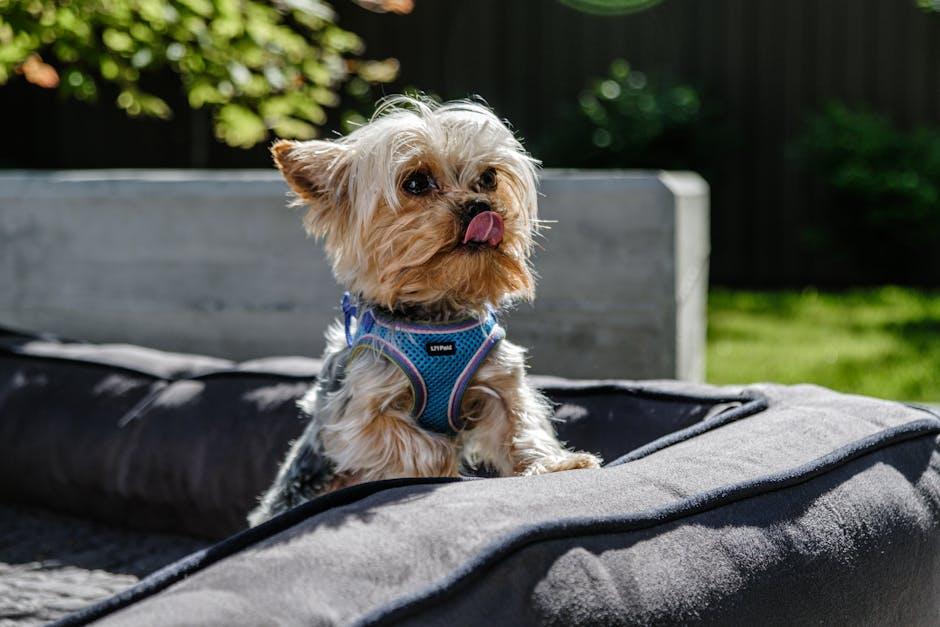Welcoming a new person into your home or encountering someone unfamiliar during a walk can be an exciting yet challenging experience for your dog. As a responsible pet owner, ensuring your furry friend feels secure and remains safe around strangers is paramount. Whether your dog is naturally sociable or tends to be more reserved, understanding how to manage these interactions is key to fostering a harmonious environment for everyone involved. In this guide, we’ll explore practical tips and gentle strategies to help you and your dog navigate encounters with strangers confidently and safely, all while nurturing a trusting bond that stands the test of time.
Understanding Your Dogs Body Language
Deciphering your furry friend’s non-verbal cues is crucial for ensuring their comfort and safety around new faces. Dogs communicate a lot through their body language, and being able to read these signs can help prevent uncomfortable situations. Here are some key signals to look out for:
- Relaxed Body: A dog with a loose, wagging tail and relaxed posture is generally comfortable and at ease.
- Alert Ears and Stiff Tail: These could indicate curiosity or mild concern. It’s important to monitor their next moves to gauge their comfort level.
- Yawning or Licking Lips: These subtle signs often suggest anxiety or stress. Give them space and time to adjust.
- Backing Away or Hiding: These are clear signals of discomfort. It’s best to give them some distance and avoid forcing interactions.
By paying attention to these signals, you can create a positive experience for both your dog and strangers, fostering a safe and welcoming environment. Remember, patience and understanding are key to helping your dog navigate new social situations.

Creating Positive Experiences with New People
When introducing your dog to new people, it’s essential to ensure that the experience is positive and stress-free for both your pet and the stranger. Here are some tips to help your furry friend feel comfortable and secure:
- Stay Calm and Confident: Dogs often pick up on their owner’s emotions. If you remain calm and composed, your dog is more likely to feel at ease.
- Use Positive Reinforcement: Reward your dog with treats or praise when they exhibit calm behavior around new people. This encourages them to associate strangers with positive experiences.
- Control the Environment: Introduce your dog to new people in a familiar and controlled setting where they feel safe. This might be your home or a quiet park.
- Allow Natural Curiosity: Let your dog approach the stranger at their own pace. Avoid forcing interactions, as this can increase anxiety.
- Teach Basic Commands: Ensure your dog knows basic commands like “sit,” “stay,” and “leave it.” This gives you better control during introductions.
Remember, every dog is different, and what works for one may not work for another. Be patient and attentive to your dog’s cues, and always prioritize their comfort and safety.
Setting Boundaries and Safe Spaces
When it comes to ensuring your dog’s safety around strangers, establishing clear boundaries is crucial. Dogs thrive on understanding what is expected of them, and creating a structured environment can help minimize anxiety and confusion. Begin by identifying specific areas where your dog feels most comfortable and secure, such as a favorite room or a cozy corner of the house. Use these areas as safe spaces where your dog can retreat when feeling overwhelmed. Consistently guide them to these spots when introducing new people, reinforcing the idea that it’s okay to take a break from social interactions.
- Respect their space: Encourage guests to approach your dog slowly and respect their personal space. Remind them that not every dog enjoys being petted by strangers.
- Observe body language: Keep an eye on your dog’s cues, such as tail position and ear movement, to gauge their comfort level. If they seem uneasy, allow them to step back into their safe space.
- Positive reinforcement: Reward your dog with treats or affection when they calmly interact with new people. This reinforces positive behavior and helps build confidence.
By consistently applying these strategies, you create a supportive environment where your dog feels secure, helping them navigate social situations with ease. Emphasizing safety and comfort not only protects your dog but also fosters a harmonious atmosphere for everyone involved.
Training Techniques for a Calm and Confident Dog
To foster a calm and confident demeanor in your dog when encountering strangers, consider incorporating a variety of training techniques into your routine. Start with positive reinforcement to reward your dog for exhibiting calm behavior. Whenever your dog remains composed around unfamiliar people, offer a treat, praise, or a favorite toy to reinforce this positive interaction.
- Socialization: Gradually expose your dog to different environments, people, and situations. Begin with controlled settings where your dog feels safe and gradually increase the level of challenge.
- Desensitization: If your dog shows signs of anxiety, introduce strangers from a distance and slowly decrease the distance over time, ensuring your dog remains comfortable.
- Focus Training: Teach your dog to focus on you in distracting situations. Use commands like “look” or “watch me” to divert their attention back to you.
- Body Language Awareness: Pay attention to your dog’s body language. Recognize signs of stress or discomfort and adjust your approach accordingly to maintain a positive experience.
Consistency is key, and patience will help in building your dog’s confidence. Remember, each dog is unique, so tailor these techniques to fit your furry friend’s individual needs.

